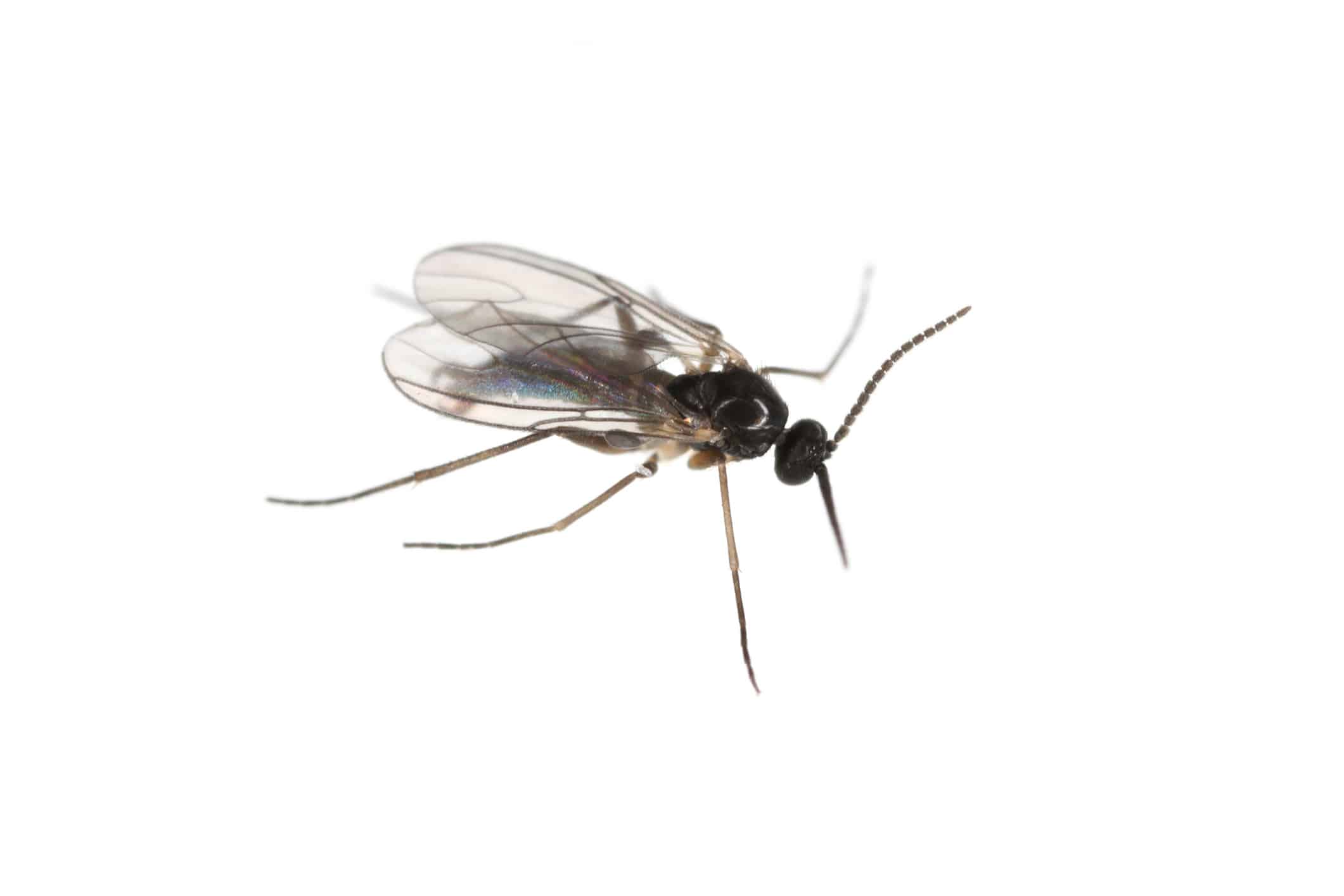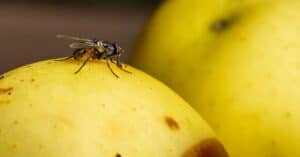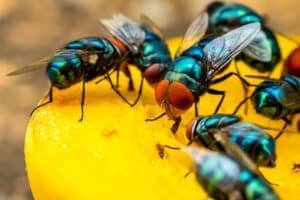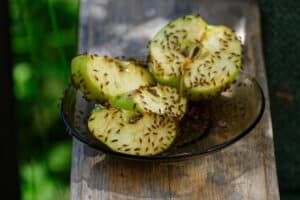You’re familiar with gnats, right? Tiny, buzzing insects mostly from the families Mycetophilidae, Anisopodidae, and Sciaridae, these bugs hang out around human heads during warm summer months. But why do they buzz around our eyes and ears? Let’s take a closer look at the little critters – and the reason why they stick so close to our eyes.
What is a Gnat?
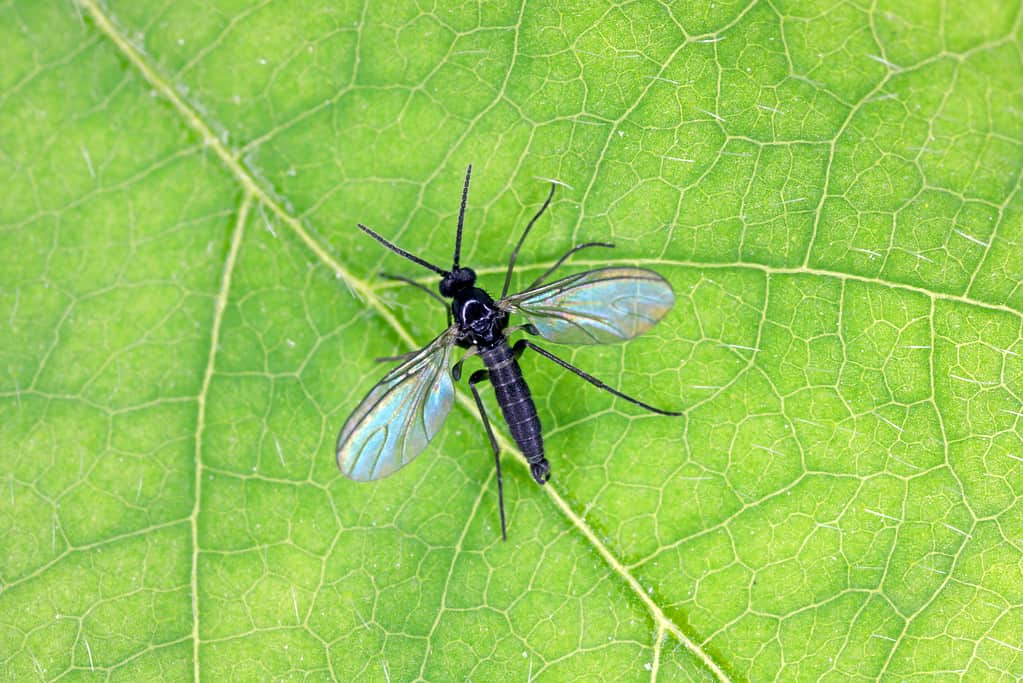
Many categories of flies fall into the ‘gnat’ common classification.
©iStock.com/Tomas Klejdsz
As we mentioned before, gnats come from a variety of insect families. No scientific consensus exists for the classification of this insect, which makes it a little trickier to categorize them. In general, they have six legs and long, slender segmented antennae. A gnat is very small and flying, and many categories of flies fall into the ‘gnat’ common classification.
All varieties share some commonalities. Every gnat is from the order Diptera, an order of flies. It’s also good to note the near-identical life cycle of all of these bugs – egg, larva, pupa, and adult. They live all over the world, with the exception of Antarctica and Greenland. These little flies enjoy warm, moist environments and congregate heavily near standing water. This is where the breeding cycle occurs. A moist, humid environment is ideal for their life cycle. You can get a lot more information on the diet, breeding cycle, and life of gnats on our informational page.
Types of gnats include drain flies, fruit flies, eye gnats, and young black flies (buffalo gnats).
Do Gnats Bite?
A big question people ask is if gnats bite or sting. The answer is generally yes! Some flies that qualify as gnats do not bite, but most have the capability and use it. A gnat bite is not as deep or severe as a mosquito bite or bee sting, but it is still irritating to many people! Four ‘cutters’ inside the mouth slice open a minuscule hole in the skin so the gnats can feed. Blood isn’t their only meal – many gnats are actually effective and useful pollinators! Many species don’t bite, thankfully, but are still annoying and hard to deal with.
Luckily, gnat bites are just a nuisance. Unlike many other biting insects, they carry little to no risk of spreading infection or disease. However, there is one sort of gnat that is a little more dangerous. The ‘eye gnat‘, a small biting fly, is capable of spreading conjunctivitis (pinkeye). Don’t worry – capability is not equivalent to commonality. While there is a definitive link between eye gnats and pinkeye, they do not carry a specific form of bacteria that causes it.
Gnats that bite come out the most in late spring to early summer. Heavy droughts encourage gnats to bite. Less moisture reduces food sources, which creates environments of need for the little bugs. Luckily, less moisture also means fewer gnats. So, drought reduces numbers but increases bite risk. A three-week period in the late spring season as summer cusps will reveal the most gnats in any given year.
Why Do Gnats Buzz Around Our Heads?
So, why do these little bugs like our faces so much? The answer is actually quite simple! First, gnats target exposed skin. Exposed skin is an easy target, so the first reason for this is our frequently-exposed facial skin. As mentioned previously, gnats can’t bite as hard or deep as other biting bugs, so long sleeves and other skin coverage is effective against many of them.
Next, gnats love moisture and salt. These two components are necessary for their survival. Our faces excrete plenty of moisture and salt, from sweat and tears. That’s why, especially in summer months, these little insects gravitate toward our faces – especially our eyes. The final main component is body heat. Gnats will swarm heavily all day, but as summer evenings progress, they get more bothersome. Why is that? It’s partially due to them seeking warmth as the sun sets. We’ll cover the other reasons in the next section!
Evening Swarms

It’s not chaos, it’s synchronous! Every mating dance follows a specific structure.
©Kendall Collett/Shutterstock.com
Why do gnats swarm in the evening? As we mentioned, these insects become more apparent to humans as the night cools off. While this is partially due to their attraction to our sweat and body heat, there’s a larger reason.
Dusk is a perfect time for a large mating swarm, especially following rainfall. The moisture in the air and the summer humidity foster a perfect environment for breeding, which draws millions of insects out as the sun sets. This is also when young gnats swarm. Fortunately, many young gnats don’t bite or sting. Gnats swarm light sources at night, so keeping lamps and outdoor lights off helps prevent swarms.
Mating swarms become the densest after periods of heavy moisture and rainfall. The humidity point and the pools of standing water following rain create perfect breeding grounds for the tiny insects.
How Long Do Gnats Live?
A pretty short-lived insect, the entire life cycle lasts 4-5 weeks. On average, these small flies live 28 days. The first two weeks are larval and developmental. An adult gnat only lives for 1-2 weeks and focuses on breeding during this time.
How to Prevent
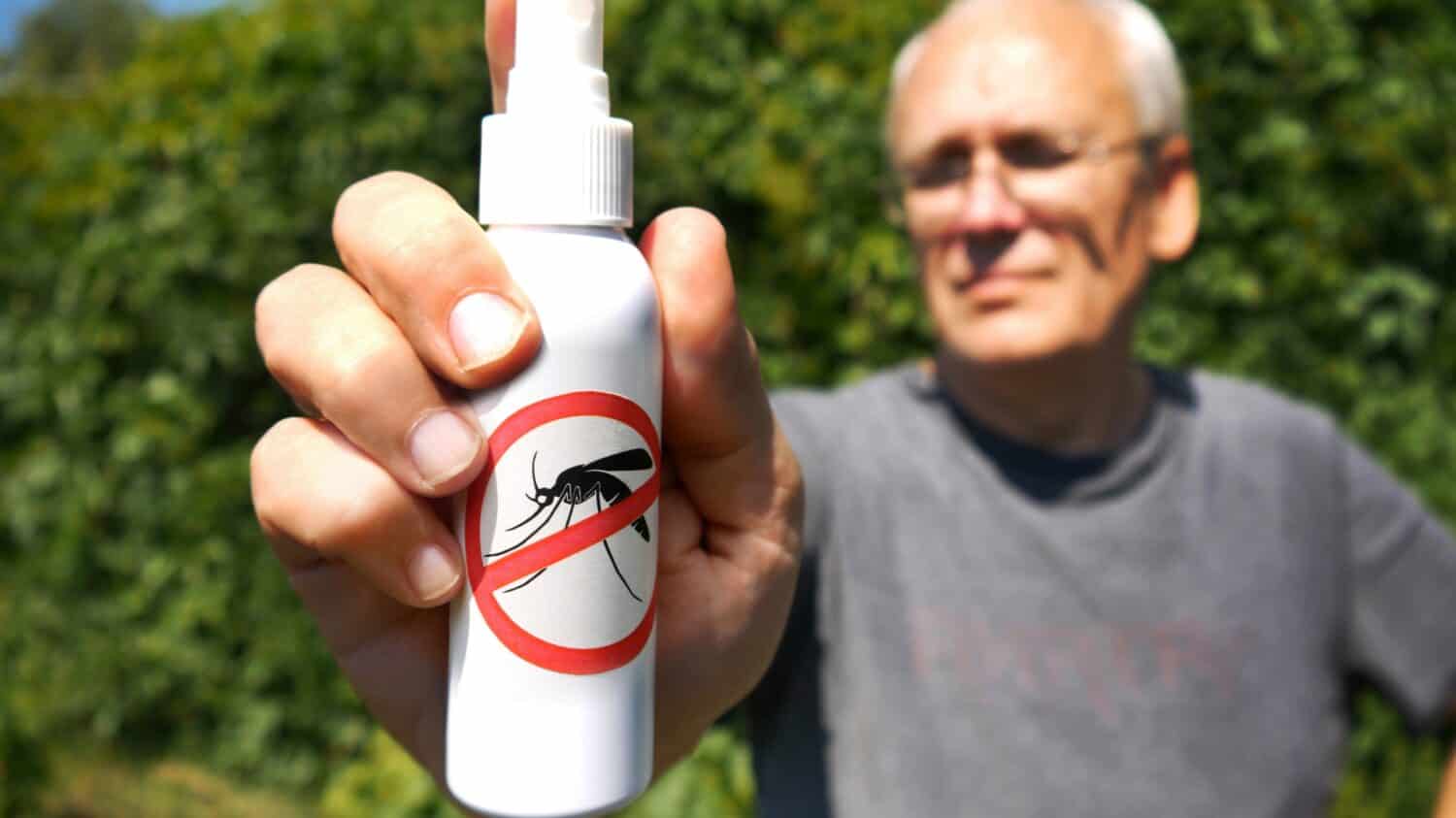
Gnats are sensitive to most mosquito repellants.
©Stockah/Shutterstock.com
In warm climates, these insects are pretty unavoidable. Let’s start with keeping them out of your home.
To prevent gnats and fruit flies in your home, start by covering and properly storing your food. Fruit and other sweets draw more flies, so focus on that first. Clean dirty dishes immediately and make sure there are no spills on your counters, in your cupboards, or on your floor. Disposing of trash and compost quickly is also assistive.
Avoid leaving standing water inside or outdoors. Standing water occurs in sinks, too, so keep your kitchen and bathroom sinks clean and dry. Sanitation is important in this case – these tiny flies can sense even the smallest food scrap. Many people recommend regularly bleaching your drains, including your garbage disposal. Keep an eye out for leaks near your toilet, shower, and other plumbing. Additionally, you can change the potting soil of indoor plants to keep it fresh and free from attractive odors and food sources.
Some smells repel them, as well. Burning citronella, lavender, and vanilla candles is helpful. Outdoors, your first line of defense is reducing standing water and dimming light sources at night. Water features, such as pools and fountains, draw swarms. Adding filtration systems to water features reduces infestations. A variety of eco-friendly water additives are available for purchase. These additives are highly effective in preventing breeding cycles of flies, gnats, and mosquitos. Do your research before buying or using these products. Some are perfectly safe and others impact your water table.
Finally, reduce the amount of decomposing and excess vegetation in your yard. This excess vegetation is a food source, a moisture point, and a hiding place for small insects. Keep in mind that none of these methods are entirely effective, but you can greatly reduce swarms by practicing them. Make sure to consider the impact of your actions – some insect prevention methods are destructive to the surrounding natural environment and impact local fauna and flora.
Interesting Facts
To finish up, we’ve included some interesting facts about gnats!
- Females lay 100-300 eggs at a time! They can lay eggs up to 30 times in their life!
- Gnats like carbon dioxide – our hot, moist exhale is very attractive to them.
- These insects are intolerant to the smells of lemon and eucalyptus.
- These little pests CAN lay eggs in your eyes! They can’t lay eggs on your skin, though.
- Only female gnats bite – just like mosquitos!
- Females have a travel distance of up to 40 miles!
- Most varieties love bright colors – likely because their diet includes so much fruit.
- Fungus gnats eat fungal growth on overly moist and rotting vegetation.
Thank you for reading! Have some feedback for us? Contact the AZ Animals editorial team.

